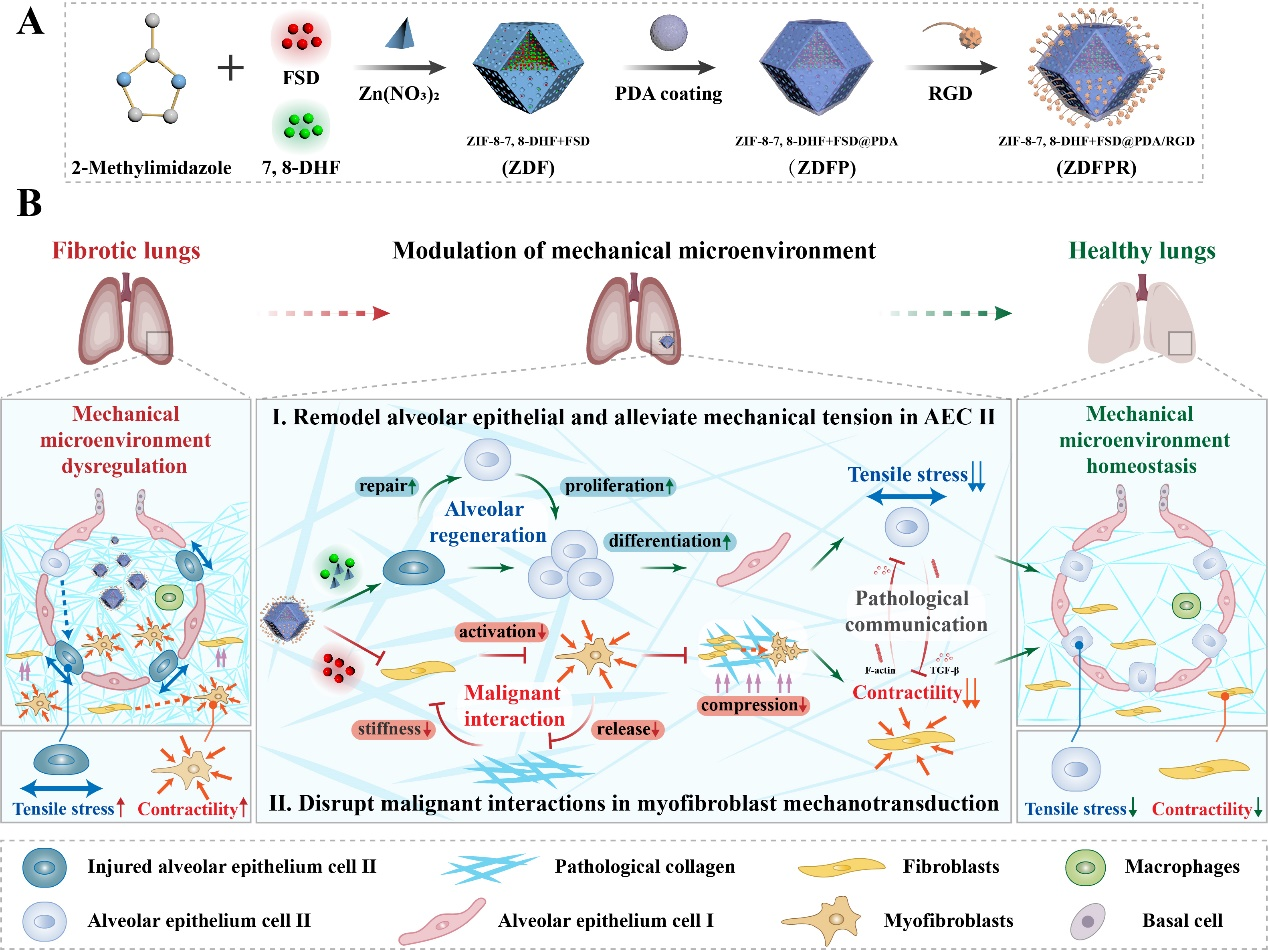By School of Pharmacy | Updated: 2024-11-20
Recently, Li Xuena, a PhD student from the School of Pharmacy at Yanbian University, published her latest research findings as the first author in Advanced Materials, with Yanbian University as the primary institution.
The corresponding author of the paper is Professor Jiang Hulin, a PhD supervisor at the School of Pharmacy of our univeristy and a professor at China Pharmaceutical University. The research team made significant progress in regulating the fibrotic mechanical microenvironment for the treatment of idiopathic
pulmonary fibrosis (IPF). Based on the impact of disrupted mechanical microenvironment in fibrotic lungs, the team developed a lung-targeted nano-delivery system to modulate the mechanical microenvironment of fibrotic lung tissue. This strategy aims to alleviate the abnormal alveolar mechanical tension
during pulmonary fibrosis and terminate the malignant interaction of intercellular mechanical signal transduction. The strategy provides innovative research ideas and therapeutic directions for the treatment of idiopathic pulmonary fibrosis.
Idiopathic pulmonary fibrosis (IPF) is a progressive and fatal lung disease whose progression is driven by injurious mechanical forces that disrupt lung mechano-homeostasis, leading to alveolar dysfunction and further disease exacerbation. Due to the inherent mechanosensitive nature of fibrotic lungs, type II alveolar epithelial cells (AEC II) are subjected to persistent stretching, while hyperactivated myofibroblasts engage in pathological crosstalk through aberrant mechanotransduction.
To address this issue, the team designed and synthesized cyclic RGDfC peptide-modified zeolitic imidazolate framework nanoparticles (ZDFPR NPs) to normalize dysregulated mechanical forces in fibrotic lungs (Fig.1). On one hand, ZDFPR NPs effectively reduced mechanical tension in AEC II by promoting alveolar repair and differentiation. On the other hand, they disrupted the self-reinforcing loop between myofibroblast contractility and extracellular matrix (ECM) stiffening. Ultimately, this system successfully restored pulmonary mechano-homeostasis in bleomycin-induced fibrotic mice and halted fibrosis progression, offering a promising therapeutic strategy for IPF.
Advanced Materials, launched in 1989 by Wiley-VCH, is one of the world's premier journals in materials science, publishing high-impact research on nanotechnology, functional materials, and novel high-performance materials. With a current impact factor of 27.4, it is classified as a Q1 TOP journal in the Chinese Academy of Sciences (CAS) ranking.
First Review: He Xin | Second Review: Du You | Final Review: Chen Yanling

Fig.1 Schematic diagram of modulating the pulmonary mechanical microenvironment for idiopathic pulmonary fibrosis therapy
